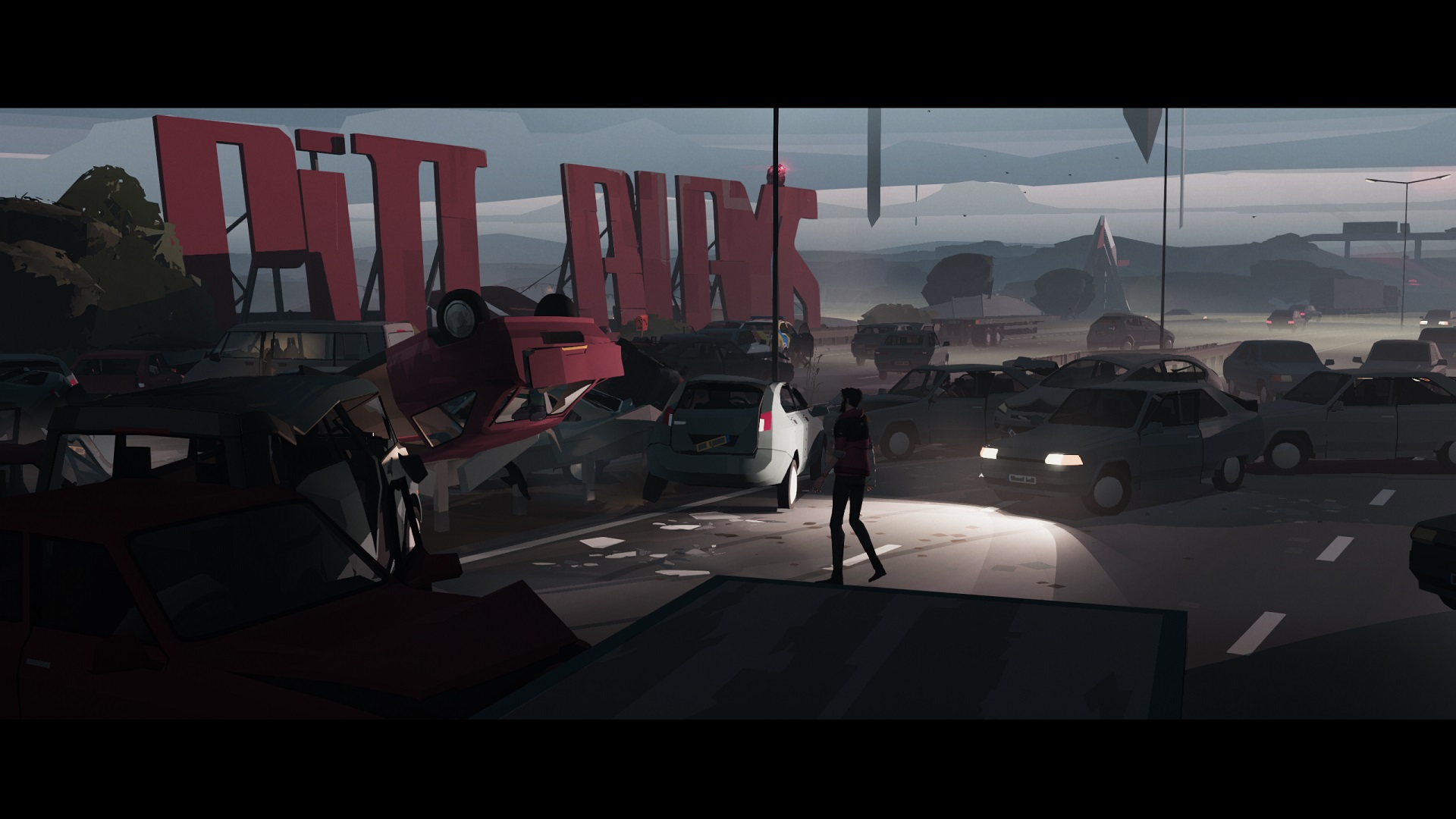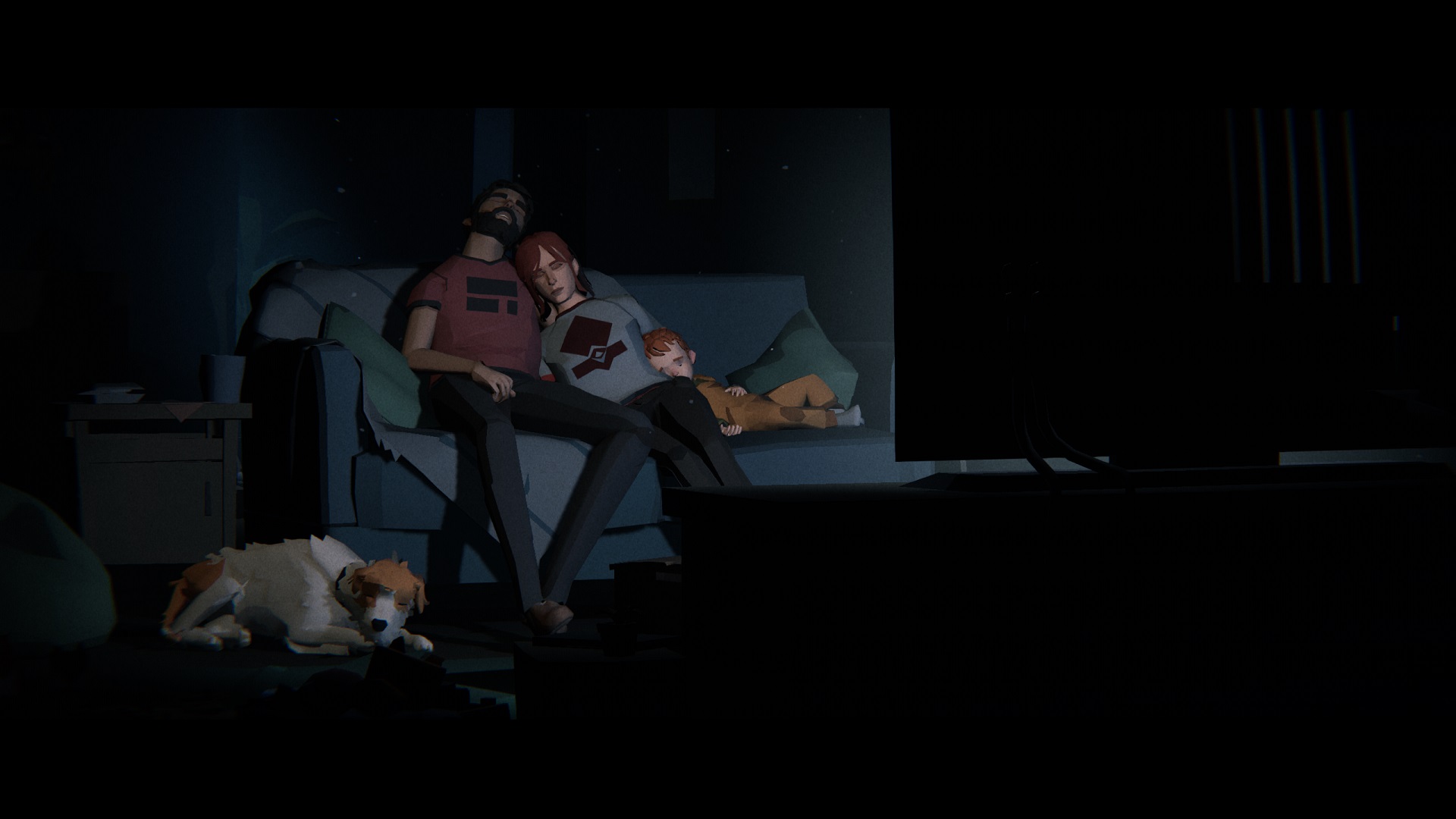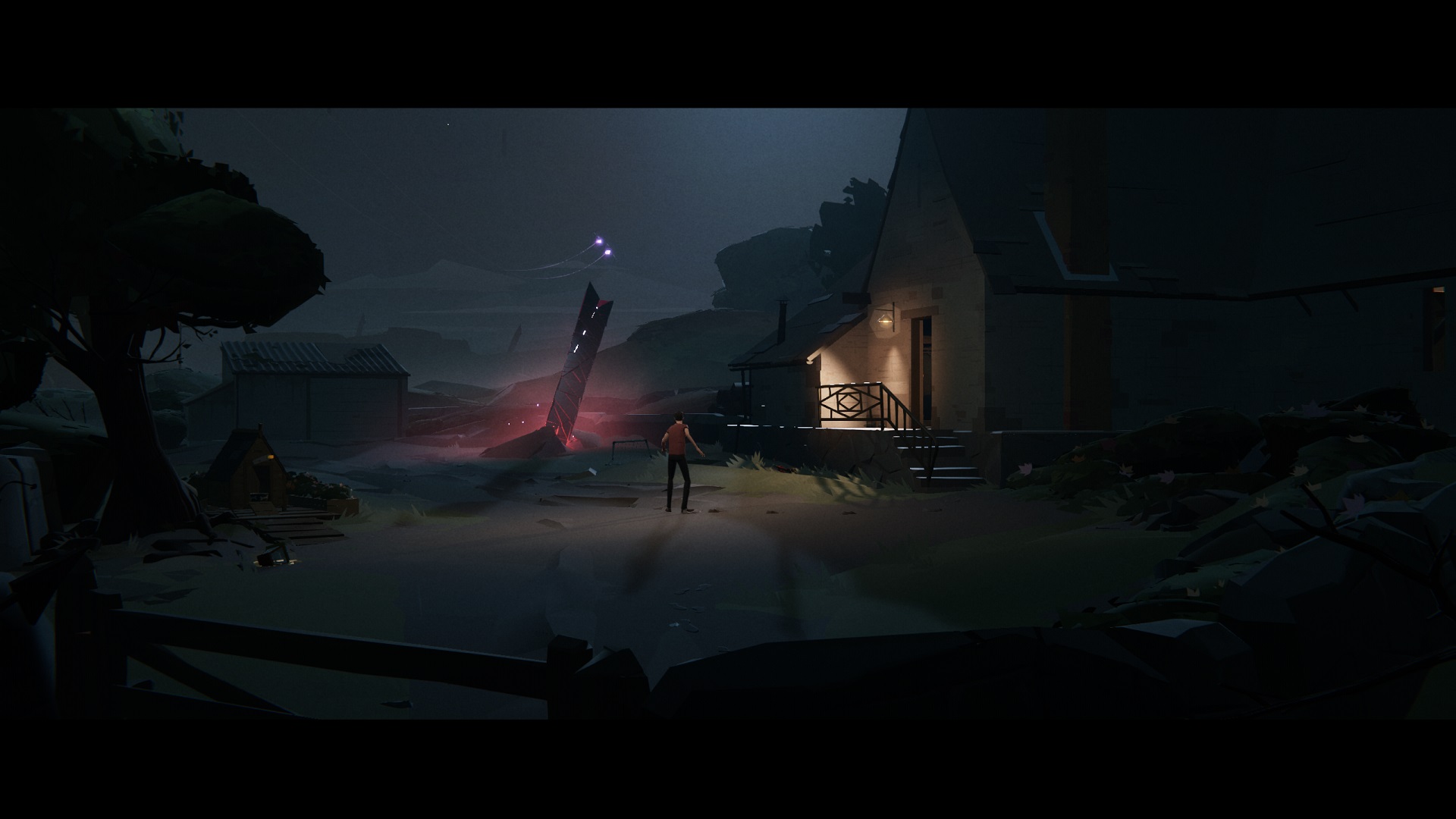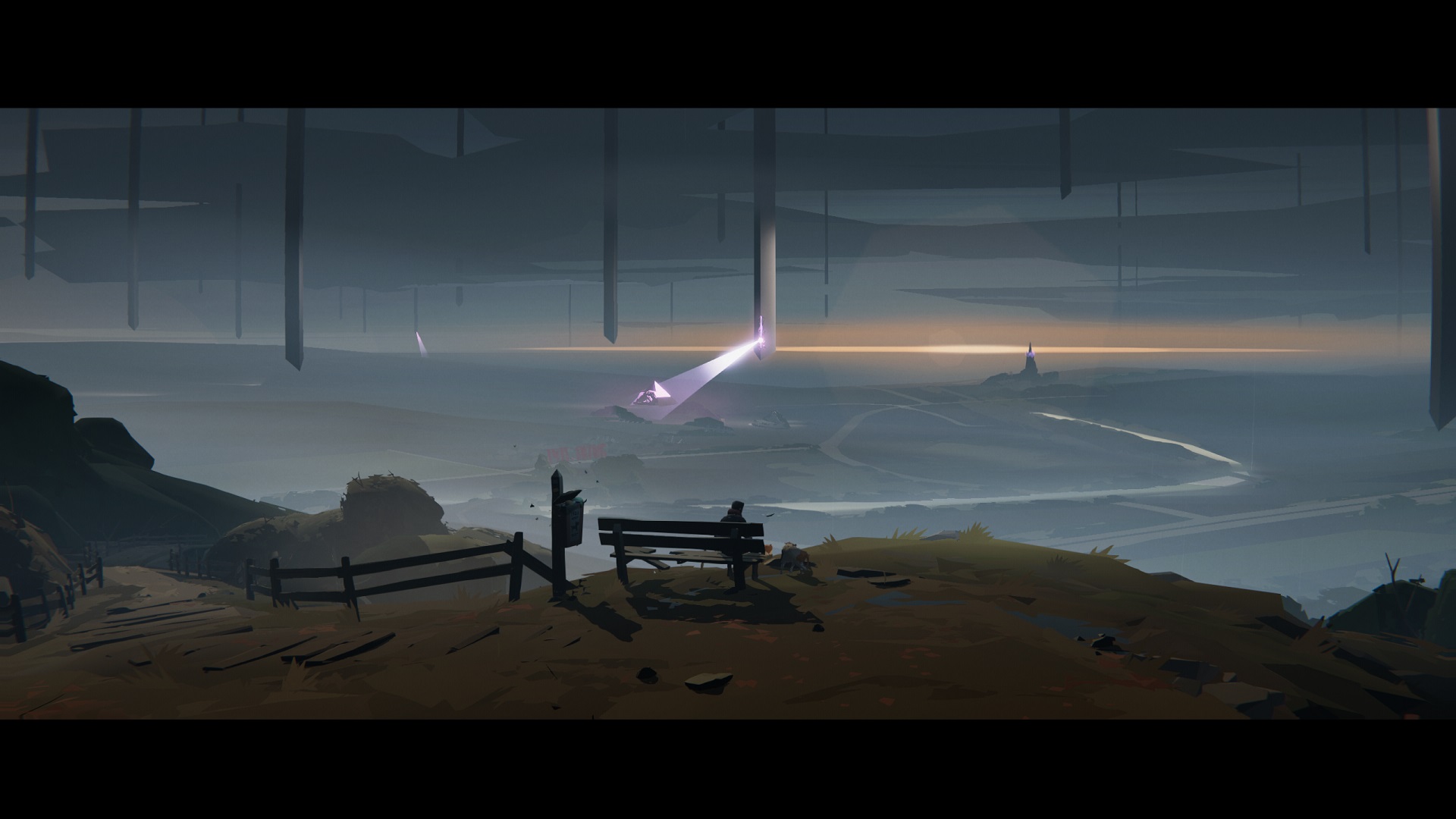‘Tis the season for horror games beginning with the letter S. And five years on from its announcement, Somerville has finally emerged over the twilight horizon. The debut title from Jumpship — helmed by veteran film animator Chris Olsen and PLAYDEAD co-founder Dino Patti — puts the lineage of its leaders front and center.
This is recognizably a marriage of top-tier visual production quality and the darkness and narrative ambiguity of those games. Somerville is not, however, greater than the sum of its parts.
Sommerville opens with a long shot of a family driving home to their remote cottage in the countryside and settles on the mum, dad, child, and dog all cozied up asleep on the sofa in front of TV static. This uncanny moment is the last true instance of peace across Somerville’s roughly four-hour runtime, and it’s a disquieting one at that.
Strange lights and sounds come from outside the family’s home, rousing them each in turn. A few moments and a few crashed things later, and you’re in control of the father, who, along with the trusty mutt, now must see what’s left of the world and what’s become of the rest of his family.
Following a close encounter with something, our protagonist finds himself in possession of Somerville’s sole gameplay mechanic: an ability to manipulate the state of the jagged, all-angles alien matter now strewn about the place. The caveat is that the ability must be paired with a light source, and lacking the foresight to pack a torch for the end of the world, this search for light becomes the anchor for much of the game’s puzzles. How do I move this lamp there? Can I untangle these wired bulbs and carry them further here?
These puzzles aren’t particularly difficult, but that’s not exactly a criticism in and of itself. I imagine they’re meant to be fairly swift affairs as you push through the ruins of what looks to be southern England — the big hint being the Glastonbury festival-inspired area you’ll encounter pretty early on, replete with a Pyramid Stage and continue fleeing the monoliths seen littering the horizon, casting their ominous purple light in the direction of sentience.
The headliner here is the environmental storytelling. It’s clearly the heart and soul of Somerville, and while there is a lot of praise due for the world that Jumpship has created, along with the striking visuals and sound design, it does come at the expense of the game itself.
Somerville is a cinematic experience to a fault, all widescreen bordered display and slow panning camera that’s forever out of your control. It’s refreshing playing through an entire experience directed in a cinematic sense, and the long cuts of our long-suffering dad strolling desolate farmlands as the purple lights scan for life in the distance bring to mind the style of Alejandro Iñárritu or even Béla Tarr.
It gives the impression that you’re being watched and adds to the unsettling feeling in the opening hour while everything is still a mystery. And while it’s aesthetically one of the game’s greatest strengths, it’s often a blocker to progress.
The disconnect that arises is that while watching a movie, the audience doesn’t need to know where the cast is going; we’ll know that when they arrive. This opens up the potential for creative camerawork and unusual framing. But as a player playing a video game, these types of shots can prove a hindrance, as smaller obstacles in your path can be either obscured or off-camera entirely. Often the chosen angles can leave ambiguity in the level design, as the route forward isn’t always clear. The depth of field, too, can make parsing a path through debris cumbersome and confusing.

In an interview with Edge earlier this year, Olsen said that Somerville “used to be 2D; now we’ve changed it into a 3D game.” I’m inclined to say that you can feel that shift tangibly. The world often feels like it’s operating on a 2.5D plane, with the camera issues exposing the lack of revision to these pivots.
Our protagonist is no fun to control. He’s unwieldy even when the camera behaves itself, despite the fact that there’s very limited interaction – just movement and an interact button beyond the ability to manipulate matter. The worst gripe is that his pace is entirely dictated by the game – and I’ve never known a character more reticent to run in the face of danger.
There’s a handful of particularly egregious scenes in which the level design, camera work, and present threat lead the player to think you’d run for the nearest obvious cover, only to have our nameless hero stroll nonchalantly to his doom. It’s baffling to see and robs the game of some of its grounded sensibility. So, too, do a number of plot points I won’t spoil, as I often found myself asking “why?” without coming up with a good answer.
Across my four hours with the game, I encountered myriad performance issues, as well. Sound both disappeared entirely or persisted across scenes, and the vibration function once needed a hard reset to cease rumbling. Character models would get stuck in loops, gesticulating to no one. A key item in the back half of the game flailed wildly about when in the protagonist’s hands, regardless of how many times I reset the game.
Somerville Review — The Bottom Line
Pros
- Spectacular visuals and cinematic feel.
- Sound design and soundtrack.
Cons
- Ill-considered as a video game, and feels like it would be a better film.
- Performance issues and bugs.
- Unsatisfying to play, both in terms of mechanics and puzzles.
Much like previous works in which Dino Pattti has been involved, nothing is ever entirely concrete in Somerville. There’s no voice acting, no text, and minimal interaction with anything beyond the components of puzzles blocking your progress. The story is shown, not told, as that old creative writing aphorism goes, leaving much to the player’s imagination.
The ambiguity throughout and up to the end is likely a deliberate means of incentivising repeat playthroughs and encouraging deeper dives into the story. And I would have liked more time in this world to decipher some of it myself, despite my issues with some of the bigger moments in the back half of the game. But it was an entirely too frustrating experience, and by the time I’d got to the end, I’d entirely run out of patience with it.
[Note: Jumpship provided the copy of Somerville used for this review.]









Published: Nov 14, 2022 03:53 pm